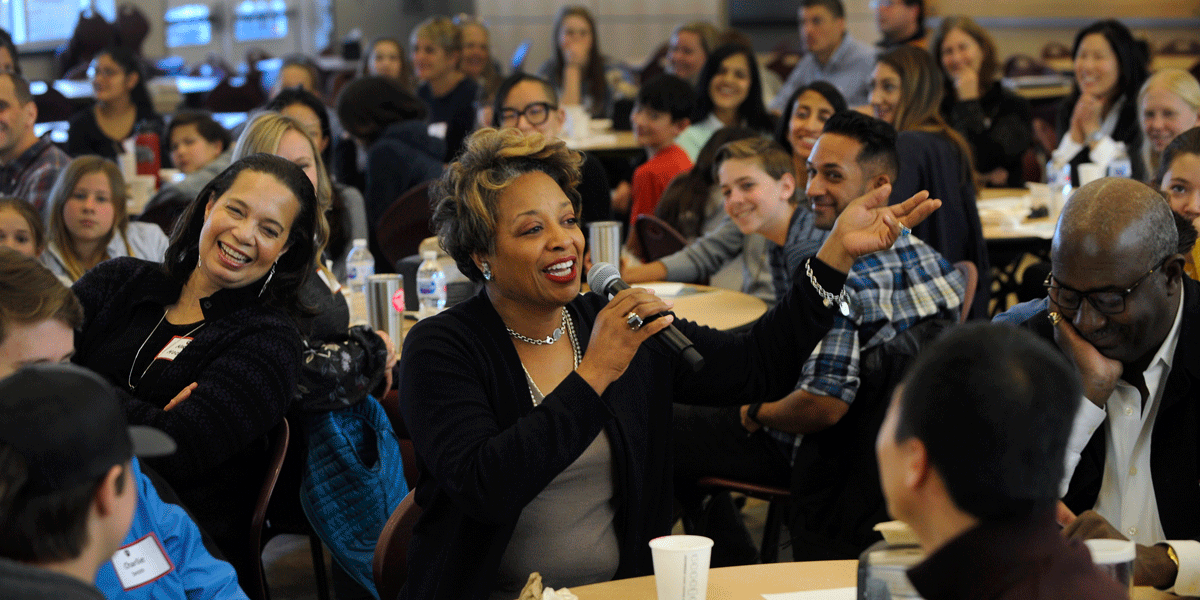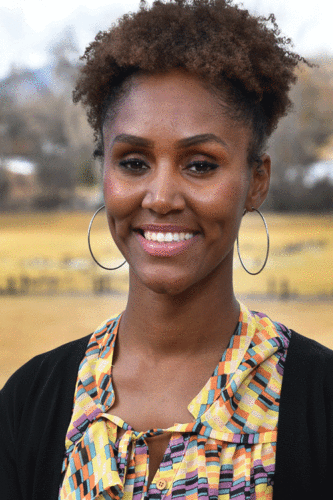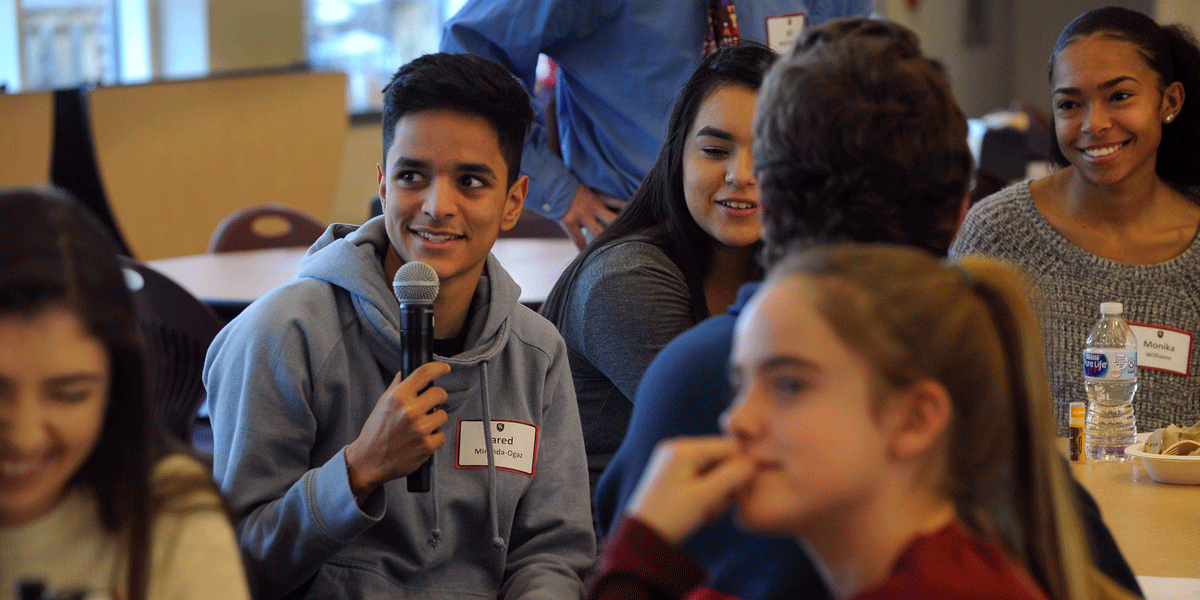At this March “Designing for Inclusion” strategy session, Colorado Academy Head of School Dr. Mike Davis did not mince words.
“We are here to think about our future as a school and the nature of our community,” he said. “No matter the institution, everyone has work to do in this arena. Today, I hope we can all be inspired to do more to honor the dignity of everyone on this campus.”

Designing for Inclusion
For the next three hours, faculty, staff, students, parents from Lower, Middle, and Upper Schools, and CA’s new Director of Inclusivity, Sarah Wright, followed Davis’s charge, brainstorming ways that members of the CA community can be more mindful about being inclusive in the future. As Davis put it, “How can we operate together and be our best selves?”
The participants were smoothly guided by Dr. Liza Talusan, an educator, speaker, leader, and writer. Talusan, who has more than 22 years of experience in PreK-20 education, proved herself to be a skillful facilitator of conversations about diversity, racism, unconscious bias, privilege, and power. She praised CA for tackling tough issues and for including students and their world view in the discussion. She cautioned that creating equality in educational opportunity means continuing a long-fought battle, and embracing diversity and inclusion is hard work. There is a need to “design for inclusion.”
“The best communities engage in difficult conversations,” she said. “We can’t rely on hope and happenstance for good things to happen. To keep going in the right direction, we have to plan for goodness.”

Definitions
Talusan began the morning by defining terms. What is diversity? Equity? Inclusion?
Diversity, she said, is the different categories that people might identify with, including gender, race, age, class, ethnicity, religion, political beliefs, and sexual orientation, among others.
Equity, she went on to say, is the different conditions an organization creates to assure that all people can be successful.
Finally, she added, inclusion means taking steps to create a more diverse and equitable community.
We design for inclusion, Talusan said, for three reasons. First, it helps children learn 21st century skills—innovation, agility, global understanding, emotional intelligence, and the ability to work effectively with others. Second, we design for inclusion so that we can engage in difficult conversations that stretch our learning out of our comfort zone. Finally, Talusan added, we design for inclusion because “hope is not a strategy.”
Sarah Wright, Director of Inclusivity
 For Sarah Wright, MEd, who will assume her new position in August, the morning affirmed her decision to join CA. “It was motivating for me,” she says. “The parents, faculty, and students may have all had different experiences at CA, but they want the same thing. They want people to feel welcome and included.”
For Sarah Wright, MEd, who will assume her new position in August, the morning affirmed her decision to join CA. “It was motivating for me,” she says. “The parents, faculty, and students may have all had different experiences at CA, but they want the same thing. They want people to feel welcome and included.”
Wright comes to CA from Miami Country Day School, where she has worked as a Lead Teacher for the Fifth Grade and was founder and leader of the school’s Global Equity and Inclusion Board. She acknowledges that her passion for working with young people might be in her DNA. “I was the kid who came home from school and wanted to “play school,” she says. But she always had one foot in the world of equity issues. In high school, when budget cuts eliminated guidance counselors, she was the one to start a petition to restore the positions.
During her undergraduate years at the Ohio State University, Wright, who started as an engineering major, can still recall a chemistry course where she experienced unequal treatment. “I would finish the labs ahead of everyone, and the lab professor called me in,” she remembers. “His immediate assumption was that I must somehow be cheating to finish ahead of others. But I had already taken the course in high school, and I knew the material.” For Wright, the issue was clear. How would she navigate this situation without “getting kicked out of school?”
After completing her undergraduate degree in Human Ecology, Wright headed straight to graduate school at the University of California at Berkeley. There, she taught dance, using hip hop as a way to give young people a tool to resolve conflict and stay safe in East Oakland. “After growing up in Ohio, being in San Francisco really opened my eyes,” she says. “It’s such a melting pot of experiences and languages. I realized that everyone has a challenge dealing with their identity and navigating their world.”
In San Francisco, Wright also expanded her interest in equity issues by working with Teachers 4 Social Justice (T4SJ), a grassroots nonprofit teacher support and development organization. T4SJ organizes teachers and community-based educators and implements programs and projects that develop empowering learning environments, more equitable access to resources and power, and a just and caring culture.
The Challenges at CA
After stints teaching in Cincinnati, at the Logan School in Denver, and in Miami, Wright was delighted at the opportunity to return to Denver and CA. She found CA to be “welcoming and transparent.”
“The students who interviewed me took their role seriously and knew what they were looking for in a candidate, and that was exciting for me,” she says. “(Former Director of Inclusivity) Adrian Green had laid the groundwork, but everyone was clear that they were ready for me to continue the work he started.”
Wright sees the challenges at CA to be no different from those in any environment today. “CA has a culture of kindness, but that can be a breeding ground for avoidance,” she says. “People are afraid they might say something offensive and be perceived as a ‘bad person.’ But you can have the courage to speak out and still be nice.”
She also wants to raise the question, “How young is too young to begin discussions about equity?”
“In order for institutions to have a cultural shift,” she says, “I think we have to have the courage to start as young as possible to develop a culture of empathy.”
She acknowledges that she will grow and learn in the job. “I will have to keep working on myself,” she acknowledges. “But I am so looking forward to creating magic with the students.”

The Work Never Stops
Throughout this school year, CA continued to be mindful of ways to be better in the areas of diversity and inclusion. For the entire school, two events reminded the community to honor and respect differences.
- At Taste of CA in January, students, parents, faculty, and staff shared food and enjoyed entertainment from various cultures and customs from around the world.
- At an All-School Assembly in February, students watched a live performance of “At the Table with Dr. King.” Through music, poetry, historical video footage, and Dr. King’s own words, “At the Table” teaches students valuable lessons of equality and respect learned during the American Civil Rights movement and challenges students to engage in creative acts of service and leadership in their own communities.
- In April, Upper School students led the planning of PlatFORUM, an annual event where students and faculty present on a wide range of inclusivity topics. Discussions from that day spawned even more work, including a series of talks with musician, band member, and pop culture “expert,” Stephen Brackett of the Flobots. He met with groups of Middle and Upper School students over a two-day period to talk about, among other things, how ethnic slurs in a rap song have very different meanings when used in the context of speech and about ways to have tough conversations with friends and classmates around offensive comments.
At the division level this year, Inclusivity Coordinators worked to incorporate respect for all people into daily activities.
- In the Lower School, teachers worked with Fifth Grade Inclusivity Mentors to cultivate inclusivity. Students read books that celebrate differences and encourage students to be courageous. Students also attended assembly presentations with Diversity Trainer Rosetta Lee, who talked about how to be curious about other people in a friendly way.
- In the Middle School, Inclusivity Coordinators initiated a new, monthly gathering “TableTalk.” During these sessions, Middle and Upper School students met to share and discuss their personal experiences, providing both mentoring and support, as well as increased understanding.
- In the Upper School, Inclusivity Coordinator activities include ongoing work and support for students in the FACES of Diversity and GSA clubs. Coordinators also created the First Annual Diversity/Inclusivity/Equity Workshop in Denver, which brought together 60 students and faculty from multiple independent schools for challenging group work as well as meaningful self-reflection.
- For parents, CA’s annual survey included questions about inclusivity and diversity. The survey data will help inform CA’s ongoing work internally and with external consultants.
Recommendations for the Future
By the end of the March meeting, Dr. Talusan invited everyone in the group to offer recommendations. Up went the white boards and out came the sticky notes, as students, parents, faculty, and staff, wrote candidly about changes to programs, policies, and practices they believe would benefit the entire Colorado Academy community.
- Hire more faculty of color so students can see themselves in their teachers and mentors. (More than one-third of CA’s new hires for 2019-2020 identify as Faculty of Color).
- Teach students from an early age to refrain from judging others superficially.
- Develop strategies to support students who do not feel like they “fit”.
- Provide opportunities for difficult conversations with and among students.
- Find ways to combat political divisiveness so students can discuss issues freely.
- Hold more sessions like Designing for Inclusion and include more people.
- Continue the school’s mission of kindness and inclusion.
- Learn from mistakes.
Talusan watched the enthusiastic engagement of the group with a smile. Clearly, these were people who wanted to focus on “being better.”
“CA is doing great things with inclusion,” Talusan said. “We want to make sure that is your strategy, not just your hope.”
